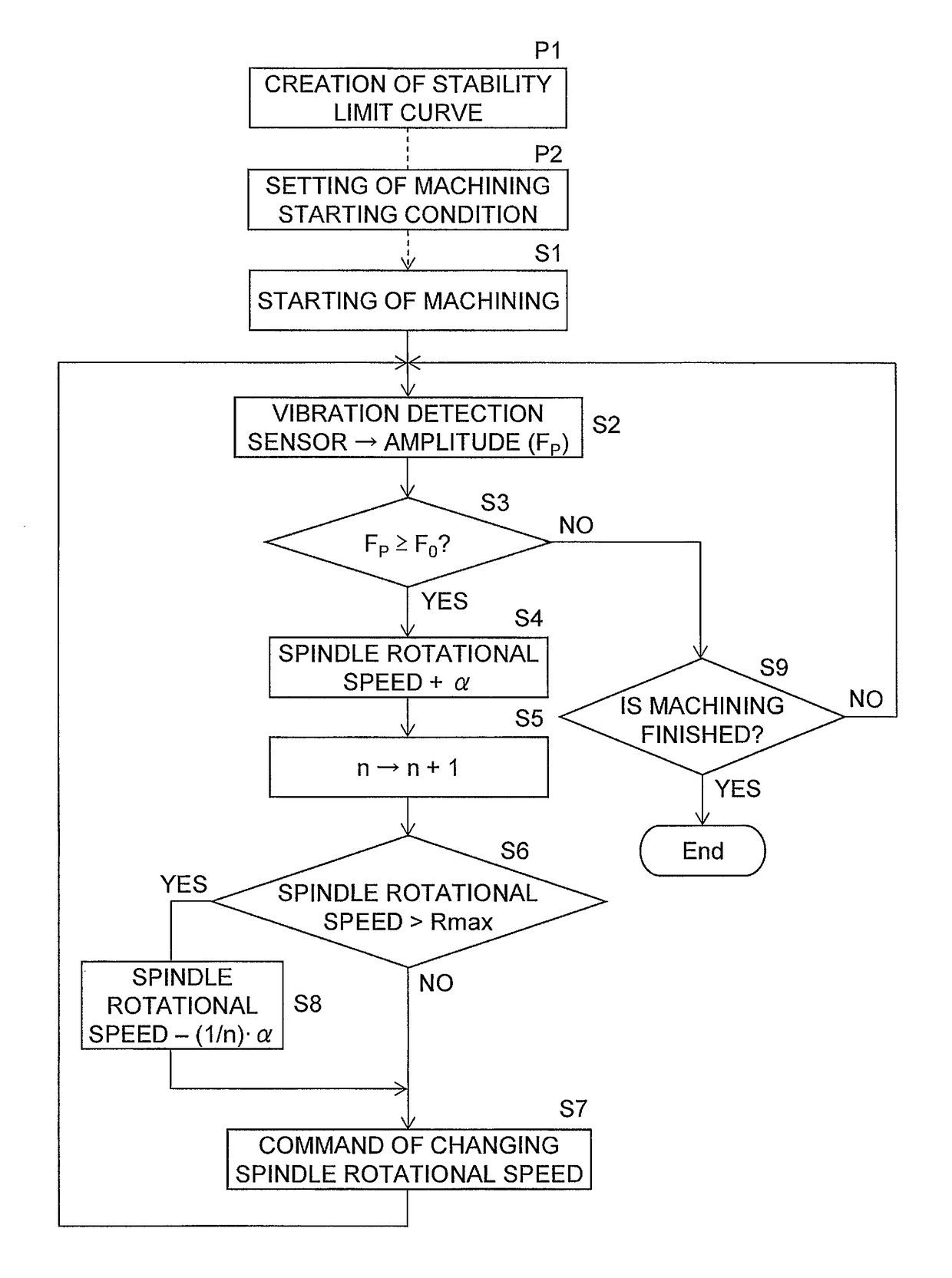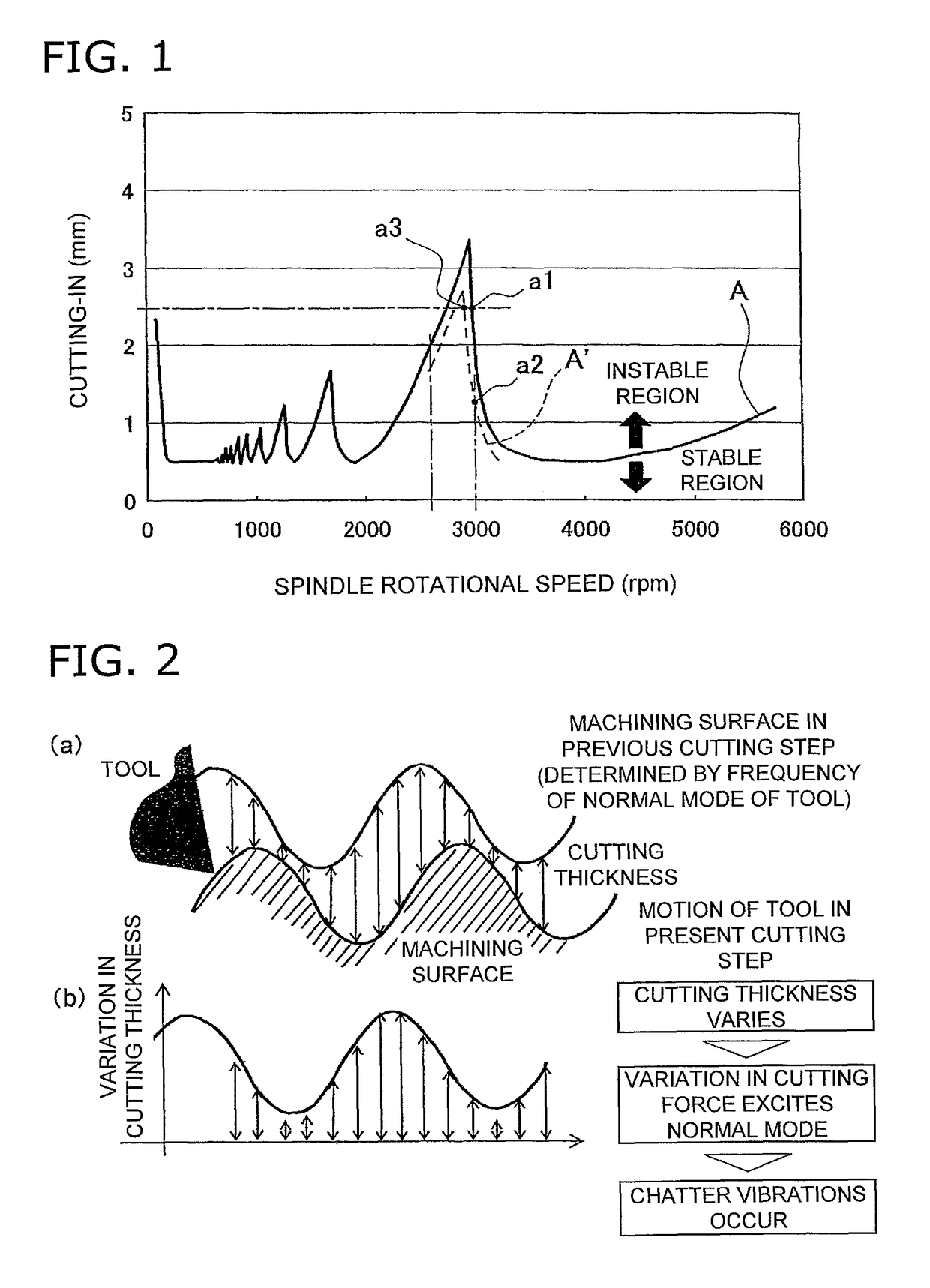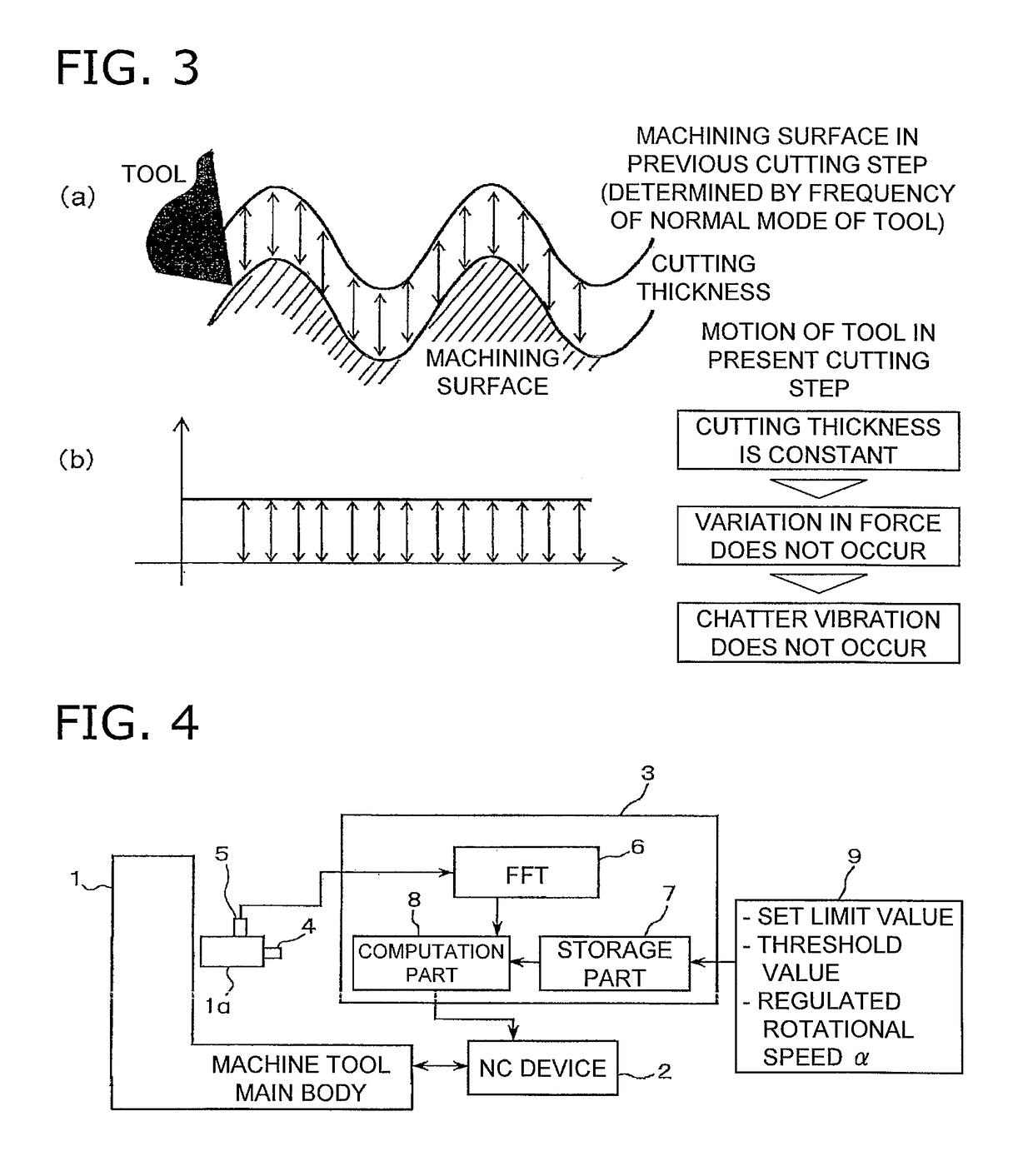Machine tool and machining control device thereof
a control device and machining technology, applied in the direction of program control, electric programme control, instruments, etc., can solve the problems of easy chatter vibration during the cutting process, drawback, and relatively weak tool stiffness, and achieve the effect of reducing chatter vibrations and facilitating and stably inhibiting them
- Summary
- Abstract
- Description
- Claims
- Application Information
AI Technical Summary
Benefits of technology
Problems solved by technology
Method used
Image
Examples
Embodiment Construction
Basic Principle of Present Invention
[0054]First, a stability limit curve will be explained.
[0055]Chatter vibrations are attributed to variation in cutting thickness during a cutting process. FIG. 2 represents the situation. As represented in FIG. 2(a), when an undulation is left uncut on a workpiece in the previous cutting step, a tool in a cutting motion is configured to be slightly shifted and cut the workpiece along a target profile in the next cutting step. Therefore, as represented in FIG. 2(b), the cutting thickness varies; this results in vibratory force that is a cause of chatter vibrations; normal mode is thereby excited; thus, chatter vibrations are supposed to occur.
[0056]In view of this, as represented in FIG. 3, chatter vibrations can be inhibited by controlling the spindle rotational speed in accordance with the frequency of the normal mode of a tool so that the cutting thickness is kept constant. In other words, it would be possible to inhibit chatter vibrations by es...
PUM
 Login to View More
Login to View More Abstract
Description
Claims
Application Information
 Login to View More
Login to View More - R&D
- Intellectual Property
- Life Sciences
- Materials
- Tech Scout
- Unparalleled Data Quality
- Higher Quality Content
- 60% Fewer Hallucinations
Browse by: Latest US Patents, China's latest patents, Technical Efficacy Thesaurus, Application Domain, Technology Topic, Popular Technical Reports.
© 2025 PatSnap. All rights reserved.Legal|Privacy policy|Modern Slavery Act Transparency Statement|Sitemap|About US| Contact US: help@patsnap.com



